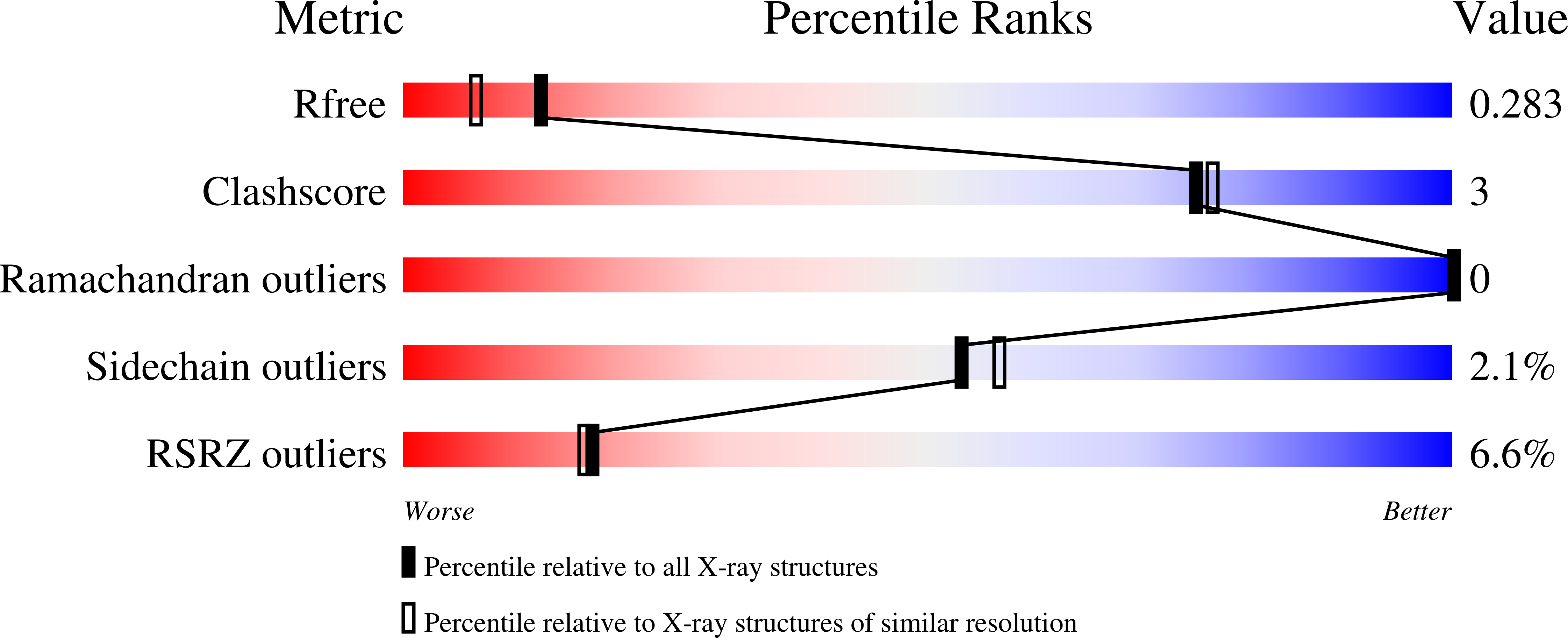Through-Space Scalar 19 F- 19 F Couplings between Fluorinated Noncanonical Amino Acids for the Detection of Specific Contacts in Proteins.
Orton, H.W., Qianzhu, H., Abdelkader, E.H., Habel, E.I., Tan, Y.J., Frkic, R.L., Jackson, C.J., Huber, T., Otting, G.(2021) J Am Chem Soc 143: 19587-19598
- PubMed: 34780162
- DOI: https://doi.org/10.1021/jacs.1c10104
- Primary Citation of Related Structures:
7N3J, 7RFD - PubMed Abstract:
Fluorine atoms are known to display scalar 19 F- 19 F couplings in nuclear magnetic resonance (NMR) spectra when they are sufficiently close in space for nonbonding orbitals to overlap. We show that fluorinated noncanonical amino acids positioned in the hydrophobic core or on the surface of a protein can be linked by scalar through-space 19 F- 19 F ( TS J FF ) couplings even if the 19 F spins are in the time average separated by more than the van der Waals distance. Using two different aromatic amino acids featuring CF 3 groups, O -trifluoromethyl-tyrosine and 4-trifluoromethyl-phenylalanine, we show that 19 F- 19 F TOCSY experiments are sufficiently sensitive to detect TS J FF couplings between 2.5 and 5 Hz in the 19 kDa protein PpiB measured on a two-channel 400 MHz NMR spectrometer with a regular room temperature probe. A quantitative J evolution experiment enables the measurement of TS J FF coupling constants that are up to five times smaller than the 19 F NMR line width. In addition, a new aminoacyl-tRNA synthetase was identified for genetic encoding of N 6 -(trifluoroacetyl)-l-lysine (TFA-Lys) and 19 F- 19 F TOCSY peaks were observed between two TFA-Lys residues incorporated into the proteins AncCDT-1 and mRFP despite high solvent exposure and flexibility of the TFA-Lys side chains. With the ready availability of systems for site-specific incorporation of fluorinated amino acids into proteins by genetic encoding, 19 F- 19 F interactions offer a straightforward way to probe the spatial proximity of selected sites without any assignments of 1 H NMR resonances.
Organizational Affiliation:
ARC Centre of Excellence for Innovations in Peptide & Protein Science, Research School of Chemistry, Australian National University, Canberra, ACT 2601, Australia.














